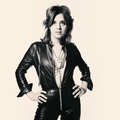5 Tips You Can Learn From B.B. King
By Strings Direct – 29 August, 2023
Written by the Happy Bluesman

In my opinion, B.B. King is the undisputed master of the blues. He redefined the electric guitar and totally changed how it was played. He introduced techniques and a style of playing that was wildly different to anything that came before him. In doing so, he had a profound impact not just on the blues, but also on rock music, and on all of the later genres that were born out of rock. I don’t think that it is too much of a stretch to say that guitarists in the modern era - regardless of the genre that they play - owe a debt to B.B. King.
Even today - over 70 years after B.B. King's career began - there is so much that we can learn from studying King's approach to the blues. This ranges from the nuances of his technique, to his approach to soloing, to the mindset that made him not just an amazing guitarist, but one of the most beloved musicians of all time.
In fact, there is so much that we can learn from B.B. King, that this list barely scratches the surface. Here though I have tried to highlight some of the key characteristics and traits that made King such a brilliant blues guitarist. I hope this helps you to learn from him and develop your own playing.
So without further ado, here are 5 lessons you can learn from B.B. King:
• 1 •
LEARN THE B.B. KING BOX
The B.B. King Box is one of the most distinctive elements of B.B. King's playing. In essence, it is a six note scale which blends the notes of the major and minor pentatonic scales. It appears a lot in King’s playing (hence the name!), and so including it in your solos and improvisations is crucial if you want to capture a bit of that B.B. magic. The B.B. King box contains the following intervals:
1, 2, b3, 4, 5, 6
It is a moveable shape that you can play all over the neck of your guitar. Typically though, King plays the B.B. King box on the top 3 strings, with the 1 (tonic note) played on the B string. This is what the B.B. King box looks like in the key of A:

The tonic note (shown above in light blue) is played at the 10th fret on the B string. The 6th note of the B.B. King Box - which in the key of A is F# - is typically played on the string below the tonic note. In the diagram above, this is the 11th fret on the G string. However, you can also play it one octave higher, shown on the diagram above at the 14th fret on the E string.
The beauty of the B.B. King box is that it works when you play it over all of the chords in a major 12 bar blues. You can play it over the I, IV and V chords and it will sound equally effective over each part of the progression. This is not true over a minor blues progression. It is very difficult to use the B.B. King Box effectively in a minor blues context.
But if you want to add a slightly different flavour and some sophistication to your playing, you should definitely learn this scale.
King uses the B.B. King box in pretty much all of his lead playing. So stick on Live At The Regal or Live At Cook County Jail to hear how King targets the notes of the box when soloing. Alternatively, another great example can be heard in the song 'Need Your Love So Bad', by Fleetwood Mac. Peter Green was heavily influenced by King, and during the opening solo of the song he plays the B.B. King box in the key of A (as above) to brilliant effect.
• 2 •
FLOAT LIKE A BUTTERLY
B.B. King's 'butterfly' vibrato is exceptional. It is without question one of the most distinctive elements of his playing. When King first learnt the guitar, he wanted to imitate the sound of his cousin Bukka White, who was a slide guitar player. Using a slide allows you to play the micro tones in between notes, and to sustain notes for longer. It is a unique sound that closely mimics the human voice, and you can't really replicate it with a regular playing style. However, B.B. King managed to get very close through his use of vibrato.
If you want to develop the same vibrato and create a similar sound to King, there are two key elements to focus on:
The first is the placement of your fretting hand. A lot of blues guitarists grip the neck of their guitar hard with their thumb when they apply vibrato. B.B. King does the opposite. He shifts his hand away from the neck and puts all of the weight onto the finger that is applying the vibrato. The only point of contact he maintains with his guitar is his fretting finger. Other blues guitarists like Eric Clapton adopt a similar technique. But typically Clapton and others only use this 'floating' vibrato style with their first finger. B.B. King is unique in that he almost always moves his hand off the neck, regardless of which finger he is using to apply vibrato.
Adopting this style of vibrato is challenging enough using your index finger. But applying it with your ring and little fingers is very challenging. Stick with it though, as it is a key skill to develop if you want to sound like B.B. King.
The second key characteristic of King's vibrato is the pace at which he moves his left hand. The finger he uses to apply vibrato moves very quickly. It is almost like a trill, but executed just with a single finger. Yet despite the speed at which King's finger moves, his vibrato doesn't actually move the string very much. He doesn't alter the pitch of the notes drastically. Instead his vibrato adds sustain and feeling to his playing.
• 3 •
TARGET THE TONIC
Eric Clapton once said of B.B. King: "I can tell B.B. from just one note. Most of us can, I think." And it is true. King has a way of captivating you with very simple phrases, often using just a handful of notes.
One particular note to which King regularly returns in his playing is the tonic note. When you target the tonic note in your solos it helps to create a consonant and resolved sound. And I often recommend it as a way of resolving your phrases. It can act like a musical full stop and make your phrases sound more complete and therefore more impactful.
King targets the tonic note a lot in his playing. But he makes it more interesting by typically playing it in one of two ways:
Firstly, he often targets the tonic note on the high E string. This is usually in the first shape of the minor pentatonic scale. Let’s look at this on the fretboard:

This diagram shows the first shape of the minor pentatonic scale in the key of B minor. The notes shown in light blue are the tonic notes - which in this example are the notes of B.
B.B. King targets this scale shape throughout his famous song ‘The Thrill Is Gone’. And when he does so, he often zones in on the tonic note on the high E string. In fact he opens the song with this note. As noted above, this creates that consonant and resolved sound. However in this way it sounds more interesting than targeting one of the tonic notes on the lower strings.
The second way that B.B. King adds interest to the tonic is to jump up a whole octave and target the tonic note on the E string, 12 frets higher. In any given key, you will find the same pentatonic scale shape separated by 12 frets. So in the key of B minor, you have the first shape of the minor pentatonic scale appearing as follows:

The lead guitar part in ‘The Thrill Is Gone’ is predominantly played in the position on the left of the diagram. And as noted above, King finishes a lot of his phrases by targeting the tonic note of B at the 7th fret of the E string.
Throughout the song however, King jumps up to grab the tonic note of B 12 frets higher, shown above at the 19th fret on the E string. You can hear this both in the first solo in ‘The Thrill Is Gone’ starting at the 1.38 minute mark and again in the second solo which starts at the 3.11 minute mark.
King uses this technique a lot in his playing. And so you can hear it in a further range of songs, including ‘Guess Who’, ‘To Know You Is To Love You’ and ‘Chains And Things’, amongst others.
As such, if you want to add a different and interesting feel to your guitar solos - whilst also creating a strong B.B. King vibe in your solos - give this a go and see how you get on!
• 4 •
DON'T WORK SO HARD
Like many blues players, bending is a key part of B.B. King’s expressive playing style. Across his lengthy playing and performing career, King developed a lot of strength and control in his fretting hand. However he also advocated using light gauge strings to help him utilise expressive techniques like bending and vibrato.
Amongst blues guitarists there is a long held belief that you need to play heavy gauge guitar strings if you want a sweet blues tone. This belief was perpetuated by Stevie Ray Vaughan, who famously played .013 gauge strings.
Whilst it is true that in many ways your tone will benefit from using heavier strings, the idea that ‘heavier is better’ is overly simplistic. Heavy gauge strings make playing more challenging. They make it more difficult to execute bends and apply vibrato effectively.
And so whilst there are benefits of playing heavy gauge strings, these benefits are negated if you can’t play and express yourself properly.
King adopted this school of thought relatively early in his career. He believed that you should choose strings that allow you to produce beautiful tones, without sacrificing comfort or playability. He also urged others to consider using lighter strings too. As Billy Gibbons of ZZ Top once recalled:
B.B. said to me, ‘Can I play your guitar?... He strummed it a few times and handed it back to me. He looked at me rather quizzically and said, ‘Why you working so hard?...Those strings. You got real heavy, heavy strings.’ I said, ‘Well, isn’t that how to get the heavy, heavy sound?’ He said, ‘No! Don’t be working so hard!’
Gibbons then went on to play very light gauge strings. His custom set of Jim Dunlop strings run from .007-.038!
King himself played a mixed gauge of strings that ran as follows:
.010, .013, .017, .030, .044. .054.
In essence then, he was playing a medium gauge on his top strings and a heavy gauge on his bottom strings. Until recently, Gibson produced a set of B.B. King signature strings in this gauge. But for whatever reason, these no longer seem to be in production.
To find a ready made set of strings that match these gauges exactly is a little tricky. But the 'Skinny Top, Beefy Bottom' strings from Ernie Ball come very close and would be a great choice. The Ernie Ball - Skinny Top, Heavy Bottom (.010-.052) and D’Addario - Light Top, Heavy Bottom (.010-.052) would also work well.
Try some of these strings out and experiment until you find what works best for you. Given that B.B. King doesn't play fast, but does favour big soaring bends and long sustaining notes - I wouldn't recommend going much lighter than .010s, but you could definitely go up to .011s if you wanted, and if doing so doesn't affect your playing too much.
• 5 •
STOP SPENDING
B.B. King once said, "Notes are expensive, spend them wisely." It is one of my favourite quotes from any guitarist. And it is a quote that perfectly sums up King's restrained approach to playing. He never plays for the sake of it, and there are very few - if any - wasted notes in his solos.
It is not easy to play in this way. In fact there is a common misconception that playing only a handful of notes at a slower tempo is simple. Yet as British blues guitarist Matt Schofield argues so convincingly:
To do something simple very well - to get rid of all of the fluff and nonsense - and to just cut it down to the basic essence, is much harder to do, than to be all over the (neck). There are a million guys who can do that...
Leaving space between notes is not something that comes naturally to most guitarists. And so it is easier said than done. But if you want to play like B.B. King, you need to exercise restraint when you are soloing. So when you are next improvising, try and play 50% less than you would normally.
Focus on the key phrases that you want to express and on the quality of your playing. It will feel strange at first, but your soloing will improve dramatically over time if you keep practicing in this way.
Leaving space allows each of your licks and phrases to breathe. All of the phrases will pop out of your solo and be more impactful, as opposed to blurring into one another.
Not only this, but leaving space between your phrases is less stressful for you as an improviser. You don’t have to worry about stacking lick upon lick on top of each other without any breaks. Instead you have time to pause and plan your next move. And in many ways this makes improvising easier and also more enjoyable.
CLOSING THOUGHTS
Well there we have it. 5 tips you can learn from B.B. King. This list is of course by no means exhaustive. King was a masterful guitarist with a unique and nuanced style. And to distil all of that into 5 points does not do justice to the depth of his skill.
I do hope however that the points here help you to get started channelling some of the key elements of King’s style. And in this way I hope that you can develop your own playing, whilst tipping your hat to the ‘King Of The Blues’.
Good luck! And keep a lookout for my next article, where I will look at the playing style of more iconic blues guitarists.
* * * * *
ABOUT THE AUTHOR








